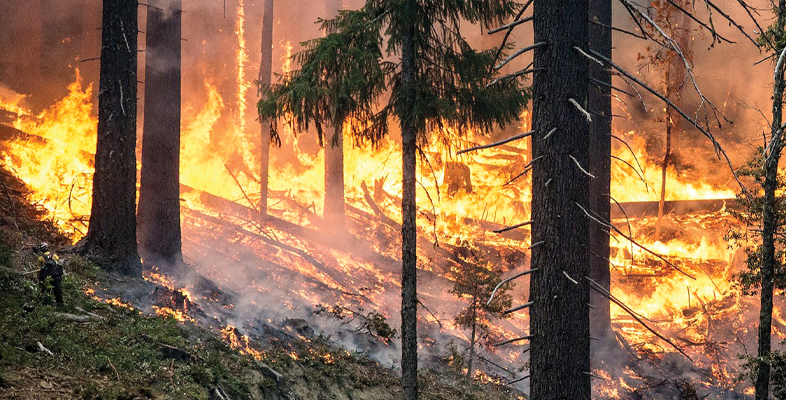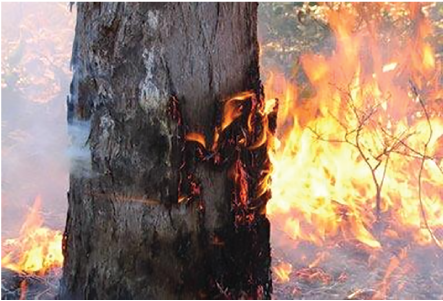2.1 Thick bark
Thick bark is a good insulator and protects the sensitive living tissue inside a tree (Figure 4). Some barks are better insulators than others. For example, the cork produced by the Mediterranean cork oak (Quercus suber) has air-filled sacs that insulate the tree, keeping the heat out.
Other species that have thick highly insulating bark include the Douglas fir (Pseudotsuga menziesii) of North America, some eucalyptus (Eucalyptus spp.) from Australia and the giant sequoia (Sequoiadendron giganteum) of the Sierra Nevada mountains of California (Figure 5).

Thick basal bark as well as self-pruning lower branches are characteristic of trees that live in ecosystems with regular surface or understory fires.
-
In what way would these two features be adaptive in ecosystems where surface or understory fires are common?
-
Thick bark around the base of the trunk would protect the inner part of the tree (cambium) from damage. The self-pruning of lower branches would ensure that the fire does not reach the live canopy (because there is little or no fuel to burn between the ground and the canopy) and result in a high intensity crown fire.
-
Would pine needles that produce a highly flammable litter also be considered an advantage in understory fire ecosystems?
-
Yes, because resin-rich pine needle litter increases the probability of fire and so prevents the build-up of understory fuel which could generate a high intensity crown fire.

